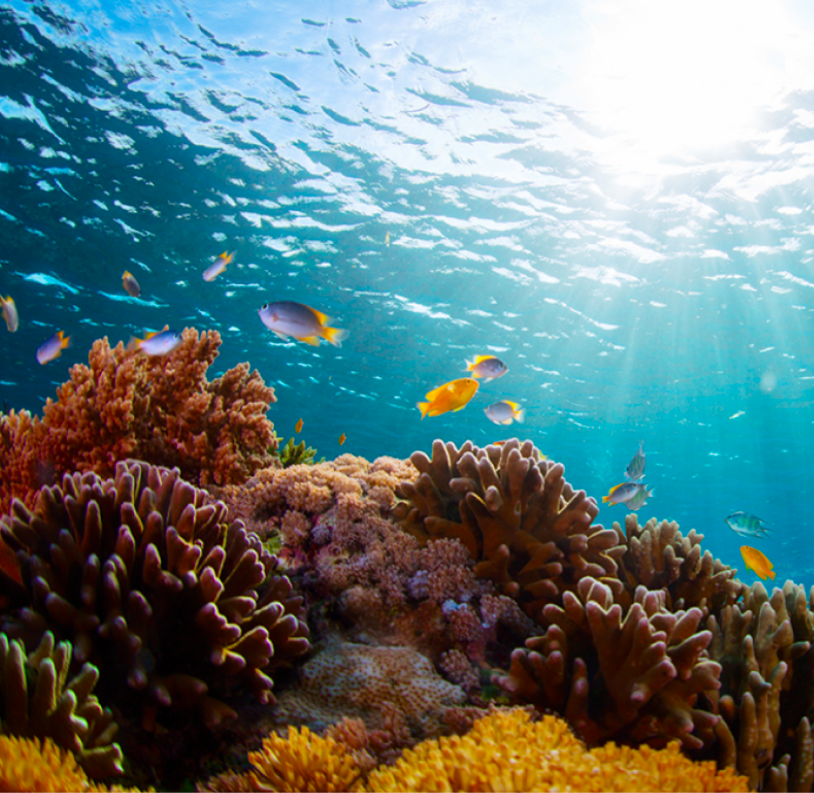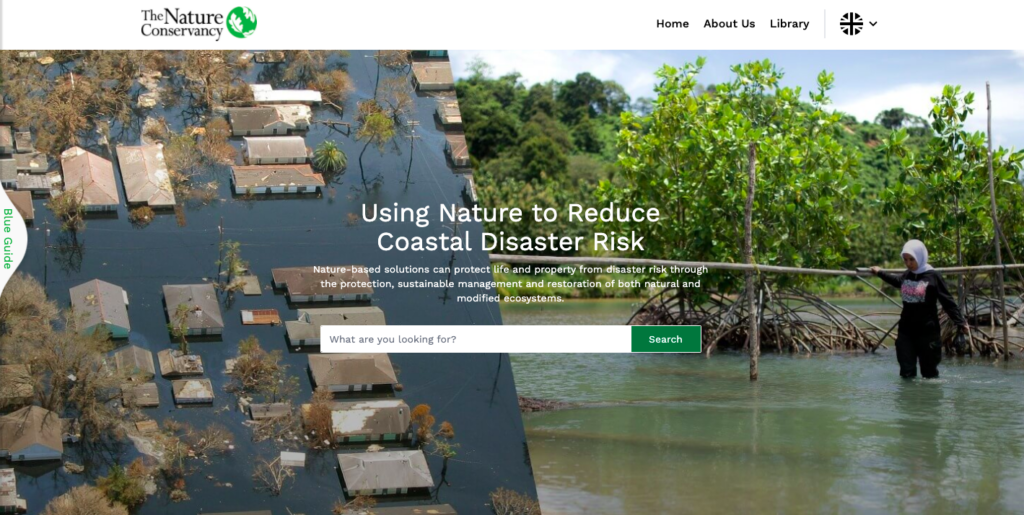 While headlines from around the globe can seem overwhelming, a certain set of people are too busy to despair — people who specialize in disaster risk reduction (DRR) and climate adaptation are racing to put innovative ideas into practice to use nature to reduce risk.
While headlines from around the globe can seem overwhelming, a certain set of people are too busy to despair — people who specialize in disaster risk reduction (DRR) and climate adaptation are racing to put innovative ideas into practice to use nature to reduce risk.
When the Atma Connect tech team landed a contract to build a robust learning platform to serve this audience, the team leapt into action. Here’s a look at how the tech team quickly created a platform for The Nature Conservancy to support DRR professionals and humanitarian organizations in how to use nature to reduce coastal disaster risk in Indonesia, Micronesia and the Caribbean.
The result: NatureProtects.org
The focus of the site is nature-based solutions, which, the homepage explains “can protect life and property from disaster risk through the protection, sustainable management and restoration of both natural and modified ecosystems.” The website is filled with resources in three languages: Bahasa, Spanish and English.
Among the resources:
- The Blue Guide to Coastal Resilience, the basis for the website, is also available as a downloadable, 100-page compendium of scientific guidance, dozens of video case studies and a larger suite of tools on using nature-based solutions to reduce climate risks.
- Nature-based solutions to reduce disaster risk in six categories: Reefs, Mangroves, Seagrass, Marshland and Swamps, Dunes, and Shelterbelts.
- A library searchable by material to read, watch, or apply as in put into practice; as well as by ways to connect with eco-initiatives, media and networks.

The information is part of the Nature Protects People Project, an initiative funded by USAID’s Bureau for Humanitarian Assistance (USAID/BHA) and implemented by The Nature Conservancy (TNC) in Indonesia with the nonprofit YKAN (Yayasan Konservasi Alam Nusantara), Micronesia and the Caribbean.
“The original plan was to offer in-depth information on nature-based solutions to practitioners in person, but when the pandemic hit, we quickly made the decision to make the extensive information and case studies available online,” says Dr. Moushumi Chaudhury, TNC’s Community Resilience Program Director.
The Atma tech team, led by product manager Aisyah Gunung, used human-centered design to understand the core issues, such as figuring out the best way to take information-laden PDFs and transform them into a truly interactive and useful website.
“I really enjoy implementing a human-centered design process into a real platform, not to mention one instantly utilized by the TNC team,” says Aisyah. The first step, as with any software project, was to create an initial design for a minimum viable product or MVP. Then came implementation, first in English, then in Indonesian along with added features, then in Spanish.
While the NatureProtects content is for a specialized audience, it’s also useful for community members, government staff, and staff and volunteers of NGOs or National Red Cross and Red Crescent Societies working in coastal communities.
The issue of climate change is, after all, being felt worldwide. More than 600 million people worldwide live in vulnerable low-lying coastal areas. Atma will share highlights from NatureProtects on the Atma Go mobile app and platform, used by neighbors to help neighbors in Indonesia and Puerto Rico.
